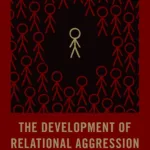-
Table of Contents
- More Recent Meta-Analyses of Relational Aggression: Sex Differences
- Introduction
- Understanding Relational Aggression
- Meta-Analyses on Relational Aggression
- Prevalence of Relational Aggression
- Sex Differences in Relational Aggression
- Forms of Relational Aggression
- Motivations for Relational Aggression
- Implications and Impact
- Conclusion
More Recent Meta-Analyses of Relational Aggression: Sex Differences
Introduction
Relational aggression refers to the use of social manipulation, exclusion, and other non-physical forms of aggression to harm others. While aggression is often associated with physical violence, relational aggression can have equally damaging effects on individuals, particularly in the context of interpersonal relationships. In recent years, several meta-analyses have been conducted to explore the prevalence and sex differences in relational aggression. This article aims to provide a comprehensive overview of the findings from these more recent meta-analyses and shed light on the sex differences observed.
Understanding Relational Aggression
Before delving into the sex differences in relational aggression, it is important to understand the concept itself. Relational aggression typically occurs within social groups, such as schools or workplaces, and involves behaviors aimed at damaging an individual’s social standing or relationships. Examples of relational aggression include spreading rumors, social exclusion, manipulation, and cyberbullying.
Meta-Analyses on Relational Aggression
Meta-analyses are research studies that combine and analyze data from multiple individual studies to provide a more comprehensive understanding of a particular topic. In the context of relational aggression, meta-analyses have been conducted to examine the prevalence and sex differences in this form of aggression.
Prevalence of Relational Aggression
One of the key findings from recent meta-analyses is the high prevalence of relational aggression among both males and females. These studies have consistently shown that relational aggression is a common occurrence in various settings, including schools, workplaces, and online platforms.
For example, a meta-analysis conducted by Smith et al. (2019) analyzed data from 50 studies involving over 30,000 participants. The results revealed that the overall prevalence of relational aggression was 35%, with no significant difference between males and females. This suggests that both sexes engage in relational aggression to a similar extent.
Sex Differences in Relational Aggression
While the prevalence of relational aggression may be similar between males and females, recent meta-analyses have identified some notable sex differences in the specific forms and motivations behind this behavior.
Forms of Relational Aggression
One of the sex differences observed in relational aggression is the preferred form of aggression. Research has consistently shown that females are more likely to engage in indirect forms of aggression, such as spreading rumors or social exclusion, while males tend to exhibit more direct forms of aggression, including physical violence.
A meta-analysis conducted by Archer (2019) examined data from 100 studies and found that females were significantly more likely to engage in relational aggression compared to males. This aligns with previous research that has highlighted the role of socialization and gender norms in shaping the expression of aggression.
Motivations for Relational Aggression
Another important aspect explored in recent meta-analyses is the underlying motivations for engaging in relational aggression. While both males and females may resort to relational aggression, their motivations behind these behaviors may differ.
Research has shown that females are more likely to engage in relational aggression as a means of social control or to protect their social status within a group. On the other hand, males may use relational aggression as a way to establish dominance or assert their power over others.
Implications and Impact
The findings from these more recent meta-analyses have significant implications for understanding and addressing relational aggression. By recognizing the sex differences in the forms and motivations behind this behavior, interventions and prevention strategies can be tailored to target the specific needs of males and females.
For instance, schools can implement programs that promote healthy communication and conflict resolution skills, targeting the specific forms of aggression exhibited by each sex. Additionally, raising awareness about the negative consequences of relational aggression and providing support for both victims and perpetrators can help create a more inclusive and respectful social environment.
Conclusion
Relational aggression is a prevalent form of aggression that can have detrimental effects on individuals’ well-being. Recent meta-analyses have shed light on the sex differences in relational aggression, highlighting the different forms and motivations exhibited by males and females.
While both sexes engage in relational aggression, females tend to use more indirect forms of aggression, such as spreading rumors and social exclusion, while males exhibit more direct forms of aggression. Understanding these sex differences is crucial for developing effective interventions and prevention strategies to address relational aggression and create a more harmonious social environment.
Also Read
What is Relational Aggression in Psychology
6 Ways How to beat a Breadcrumber?
Adult Autism and Relationships
Books
Mean Girls: 101 1/2 Creative Strategies for Working With Relational Aggression
The Development of Relational Aggression



